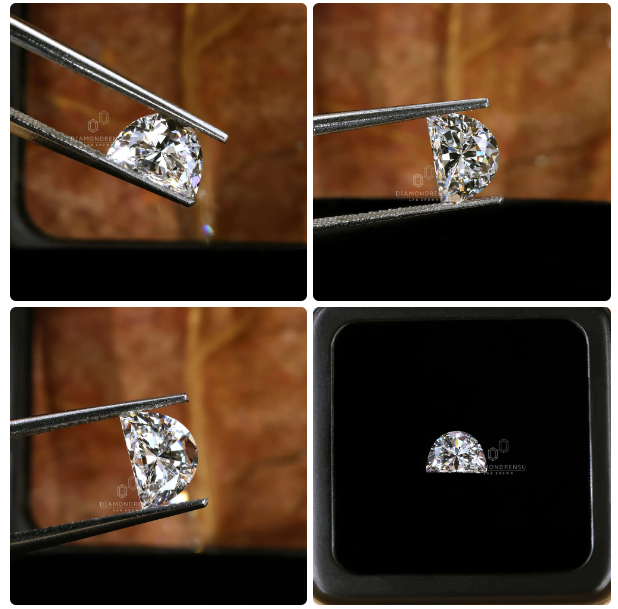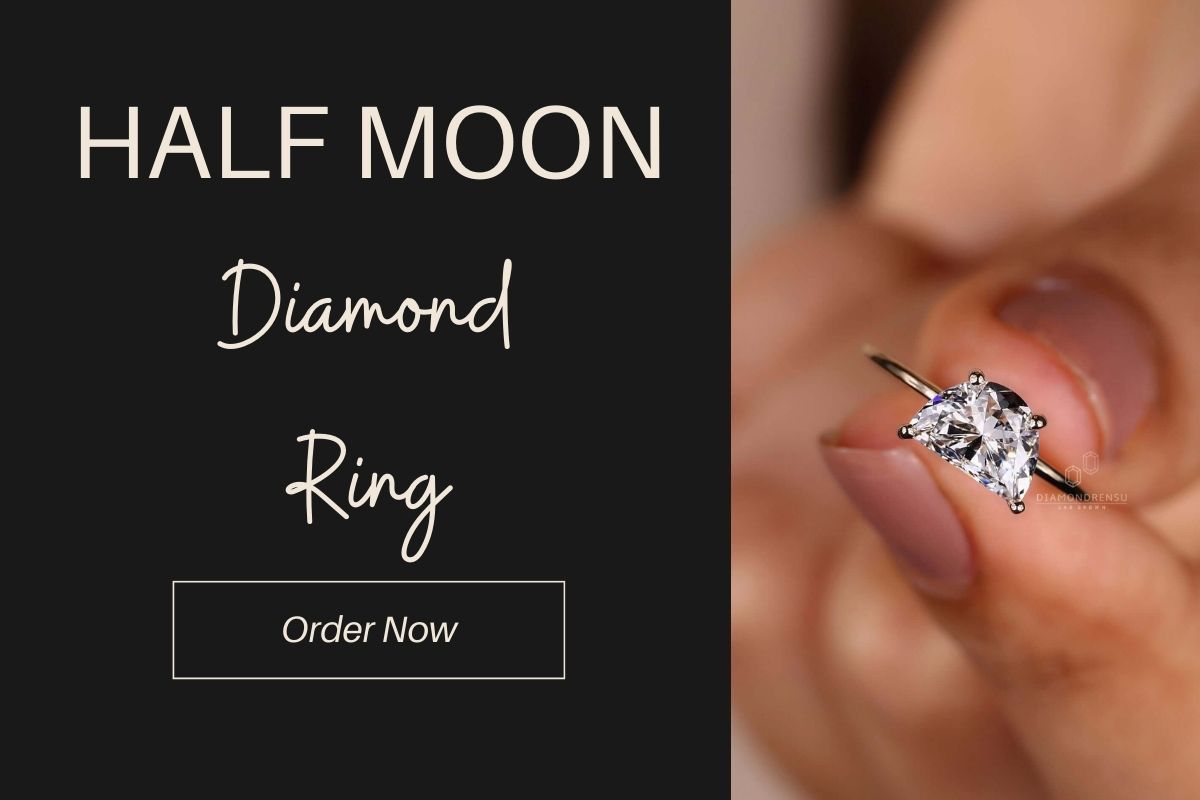
What Is a Half Moon Diamond: Unveiling the Unique Cut
A half-moon diamond is a unique and elegant shape that is making its mark in the world of fine jewelry. Shaped like a crescent, this diamond cut features a straight edge on one side and a rounded edge on the other, mirroring the appearance of a demilune or half-circle. I find the half-moon diamond captivating because of its distinctive shape that provides a modern yet romantic appeal, making it a perfect choice for those looking to incorporate an element of creativity into their jewelry pieces.
In my experience, half-moon diamonds are often utilized as side stones to complement a larger center diamond in engagement rings, particularly in three-stone settings. This is likely because their flat edge aligns smoothly next to another stone, while the curved side adds a soft contour that enhances the overall aesthetic of the piece. Despite its name suggesting a simplistic design, the intricate cut of a half-moon diamond requires precision and expertise to achieve its desired symmetry and proportion.
What Is a Half Moon Diamond?
In this section, I will provide insights into the distinctive characteristics of half moon diamonds. Known for their unique shape and charm, these gems are an intriguing aspect of jewelry design.
History and Origin
I understand that half moon diamonds, often termed demilune or crescent-cut diamonds, present a storied history. Although the precise origins aren't widely documented, it is clear that such a fancy cut diamond emerged to compliment larger center stones in various jewelry settings. Their name, reflecting their shape, is a nod to their resemblance to a demilune, meaning 'half moon' in French.
Defining Features
When it comes to the defining features of half moon diamonds, I can pinpoint a few specifics:
-
Shape and Cut: Characteristically, a half moon diamond looks like a round or oval diamond sliced in half—one side exhibits a straight edge and the opposite side a rounded curve.
- Faceting Style: The cut often integrates the interplay of light and depth similar to round cuts, offering an appealing sparkle.
- Faceting Patterns: Variations may include traditional step cuts or more intricate brilliant cuts, each impacting the diamond's reflectiveness.
-
Use in Jewelry: They are quintessentially used as side stones, bringing a harmonious balance to engagement rings, particularly in three-stone configurations.
The pride in a half moon diamond lies in its ability to blend subtlety with radiance, offering a unique alternative to more conventional diamond shapes.
Characteristics of Half Moon Diamonds
Shape and Cut
Half moon diamonds have a unique crescent or semi-circular shape with a flat edge on one side.
Brilliance
Half moon diamonds exhibit brilliance and sparkle similar to other diamond shapes, depending on their cut quality.
Settings
These diamonds are commonly used as side stones or accents in jewelry settings, complementing other center stone shapes.
Facets
Typically, half moon diamonds have 57 or 58 facets, enhancing their light performance and brilliance.
Customization
Half moon diamonds can be customized in various sizes and proportions to fit specific jewelry designs and preferences.
In this section, I'll detail the specific features that define half moon diamonds, focusing on their unique shape, ideal proportions for maximum brilliance, and the importance of clarity and color in their overall appearance.
Shape and Cut
A half moon diamond has a distinct shape: one curved side complemented by a straight edge. This configuration resembles a semicircle, accounting for its name. In terms of cut, half moon diamonds typically feature a flat surface with multiple facets—often 24 or more—that enhance their luster and sparkle. The mix of straight and curved lines provides a harmonious balance, making them an exquisite choice for side stones. Their unique design is intentional to accentuate the center stone of a ring without drawing attention away from it.
Size and Proportions
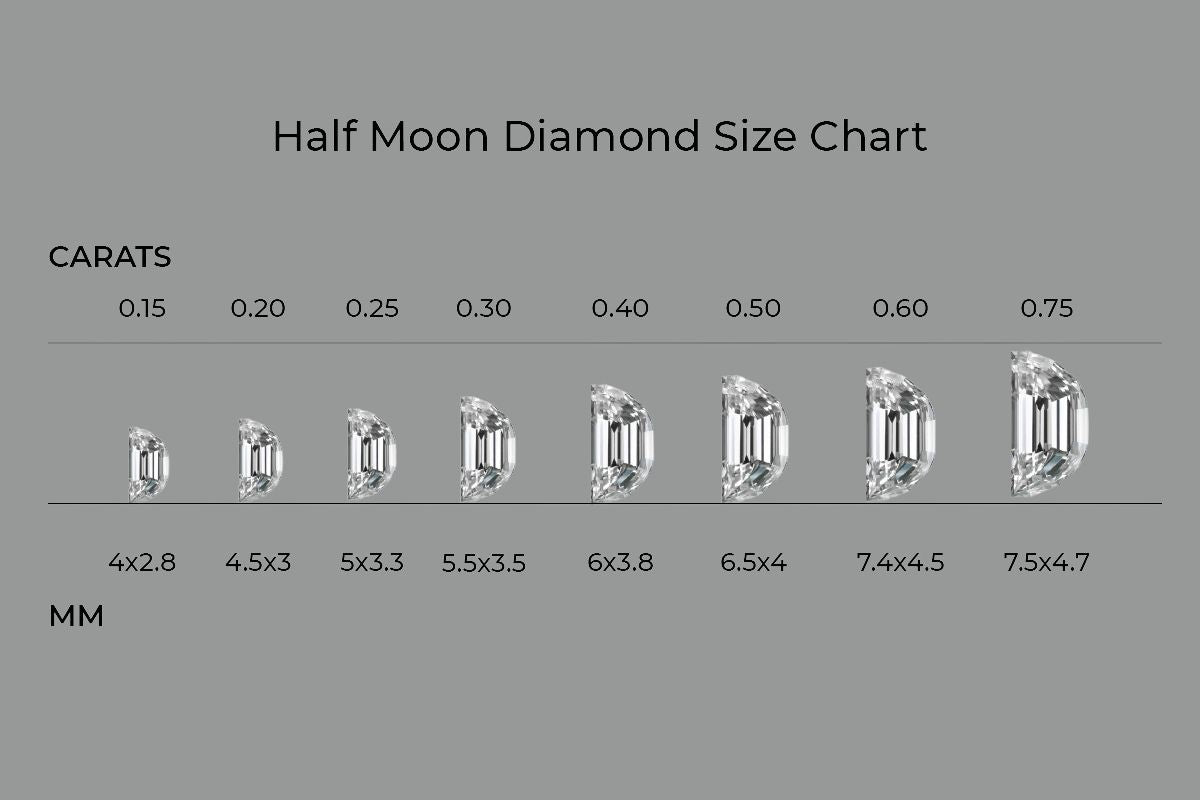
When selecting a half moon diamond, the ratio between the straight edge and the curved side is crucial. The ideal proportion ensures that the diamond fits perfectly beside the main stone. Size can vary considerably, but most half moon diamonds used as accents range from 0.10 to 0.50 carats. I make sure to recommend attention to symmetry between a pair of half moon diamonds when they're used on either side of a center stone to achieve visual balance.
| Carat (ct) | Length (mm) | Width (mm) |
|---|---|---|
| 0.25 | 3.5 | 2.5 |
| 0.50 | 4.5 | 3.0 |
| 0.75 | 5.0 | 3.5 |
| 1.00 | 5.5 | 4.0 |
Clarity and Color
For half moon diamonds, clarity plays a significant role. Choosing a clarity grade that offers a clean appearance with minimal inclusions enhances the diamond's beauty. Although they are often used as side stones, which can allow for slightly lower clarity grades without affecting the overall look of the piece, I always suggest striving for the highest clarity your budget allows. Regarding color grade, selecting a diamond that closely matches the color of the center stone is essential to ensure a cohesive and seamless aesthetic. A slight variation in color can be more noticeable due to the half moon diamond's flat surface and facet arrangement, which can reflect and refract light differently.
Half Moon Diamond as Side Stones
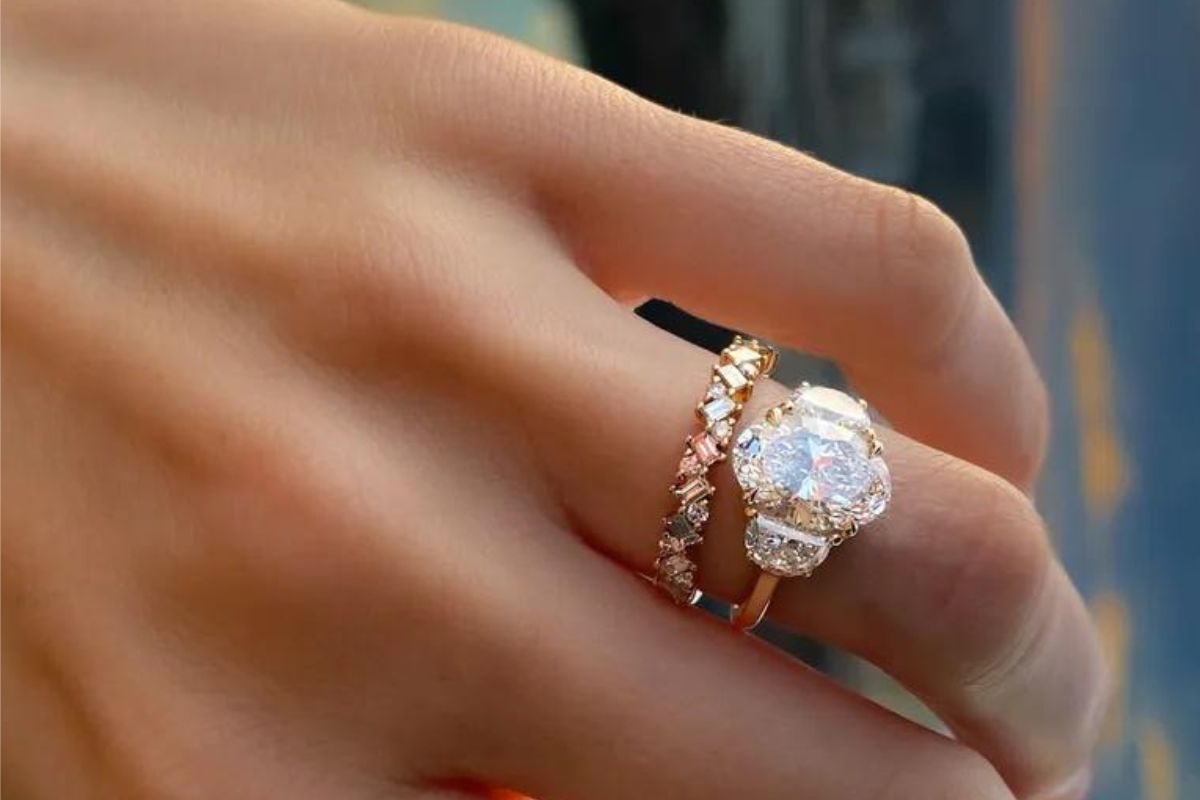
Half moon diamonds excel in their role as side stones, enhancing the appearance of a central gemstone in a piece of jewelry like an engagement ring. I'll guide you through their ability to complement center stones, the importance of matching pairs, and the variety of setting options available.
Complementing Center Stones
Half moon diamonds are frequently selected to accompany a center stone due to their flat straight edge that aligns seamlessly with the main gem. This arrangement not only emphasizes the size and brilliance of the centerpiece but also contributes to the overall symmetry and cohesion of the ring design. These side stones are particularly effective with square or rectangular center stones such as emerald cuts, as the straight edge of the half moon diamond fits neatly against them.
Matching Pairs
Finding matching pairs of half moon diamonds is essential to create symmetry and balance in the ring. Each half moon should mirror the other in size, color, and clarity for a uniform appearance. When these criteria are met, the result is a harmonious and aesthetically pleasing accent to the central diamond.
Setting Options
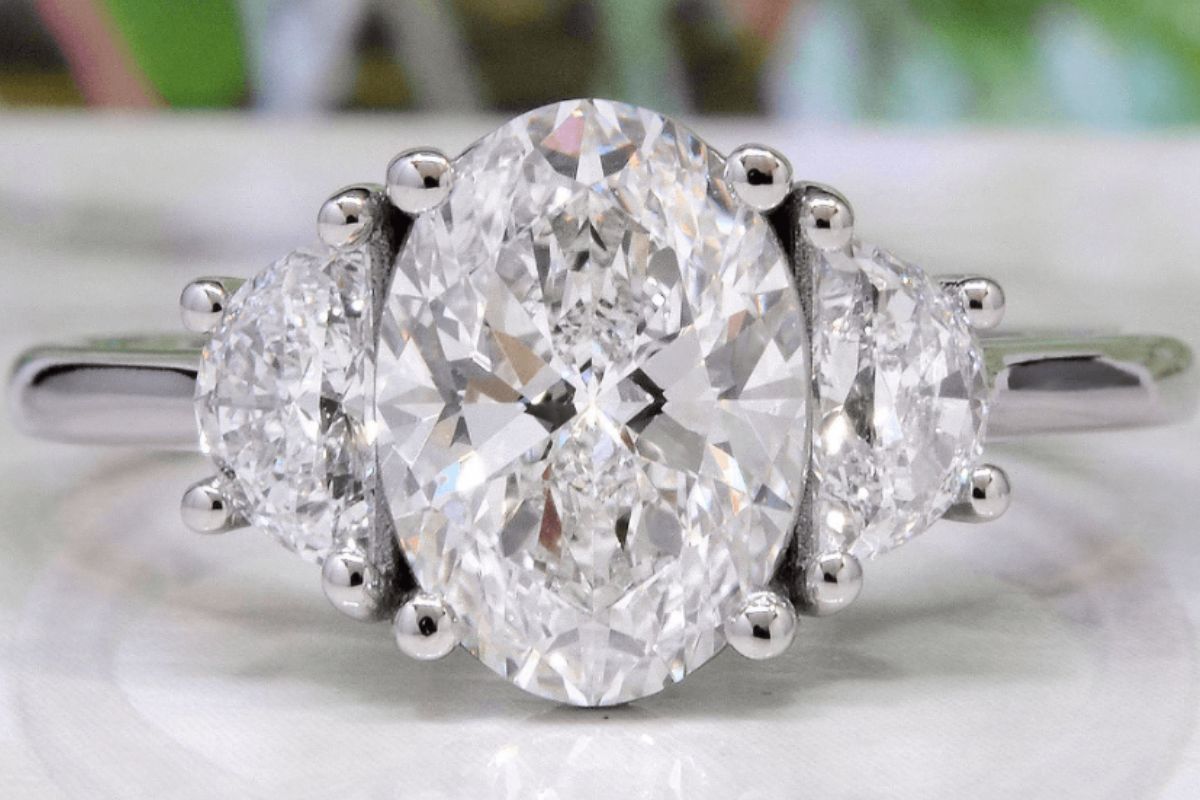
Bezel settings are a popular option for securing half moon diamonds, protecting the edges and enhancing the stone's perceived size. Other setting options include:
- Prong settings: Allowing maximum exposure of the diamond to light, increasing brilliance.
- Channel settings: Providing a sleek, modern look without prongs that can catch on clothing.
Regardless of the setting chosen, it's crucial to ensure that the half moon diamonds are held firmly in place and complement the overall design of the jewelry.
Buying a Half Moon Diamond
When I'm in the market for a half moon diamond, my primary focuses are on the gemstone's quality, its cost, and the reputation of the seller. I understand that these key factors influence the overall value and satisfaction with my purchase.
Evaluating Quality
To assess the quality of half moon diamonds, I look for symmetry between the pair, as a great match can significantly enhance their appeal when set as side stones. Here's what I typically consider:
- Shape and Symmetry: The ideal half moon should have a rounded top and a straight bottom with equal halves.
- Bow-tie Effect: I carefully examine the diamond for dark areas that can occur due to uneven light distribution.
Considering Cost
The cost of half moon diamonds is influenced by several factors. Here are main contributors to the price:
- Carat Weight: Larger stones typically cost more, although prices can vary with shape precision and matching pairs.
- Quality: Higher clarity and color ratings lead to a higher price. I look for the sweet spot where quality meets affordability.
Selecting a Seller
Choosing the right seller is crucial. I ensure they are reputable and provide detailed information about their diamonds. My checklist includes:
- Certification: Diamonds should be certified, providing assurance of their quality.
- Return Policy: A flexible return policy gives me confidence in my purchase.
By concentrating on these facets, I can make an informed decision that ensures I find a high-quality half moon diamond at a fair price from a trustworthy seller.
Styling with Half Moon Diamonds
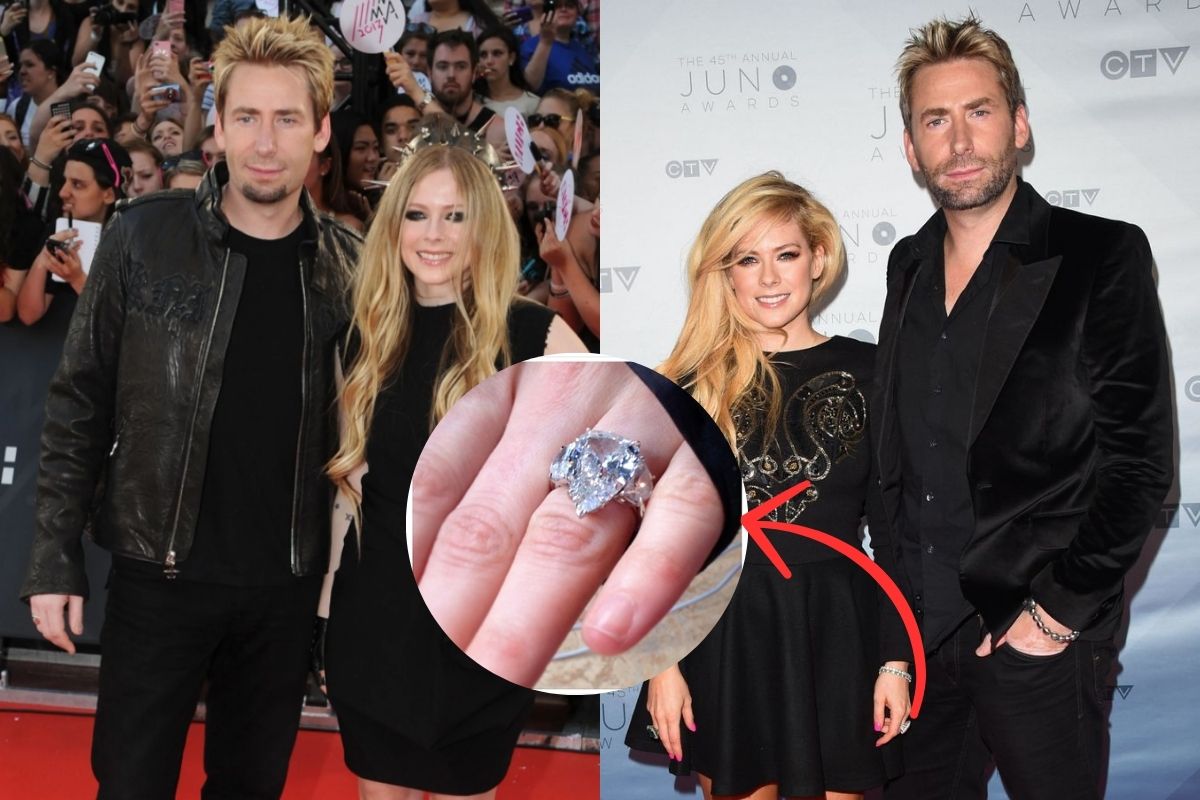
When incorporating half moon diamonds into jewelry, I focus on their distinct shape that enhances beauty and brilliance. They lend themselves well to certain styles and have been embraced by celebrities, bringing a unique flair to engagement rings and custom pieces.
Engagement Rings
In engagement rings, half moon diamonds are often set alongside a central stone to add sparkle without competing for attention. They pair particularly well with rectangular center stones such as emeralds or radiant cuts, their straight edge aligning seamlessly with the main diamond. The rounded side of the half moon complements the brilliance of the central stone, resulting in a harmonious, yet romantic interplay of shapes.
- Beauty: Enhances central diamond
- Sparkle: Boosts overall shine
Celebrity Influence
Celebrities have famously sported half moon diamonds, making a clear statement about their affinity for the cut’s unique shape and beauty. Mariah Carey's ring, for example, featured half moon side stones flanking a large emerald-cut center, while Avril Lavigne's ring paired them with a pear-shaped primary diamond. This celebrity endorsement highlights the brilliance and romantic appeal of the half moon cut in high-profile engagements.
- Mariah Carey: Emerald-cut center, half moon side stones
- Avril Lavigne: Pear-shaped diamond with half moon side stones
Custom Jewelry Designs
For those seeking a tailor-made look, I find that half moon diamonds provide a chance to create unique jewelry designs. They can be a romantic expression when used in custom pieces, often symbolizing individuality and personality. The cut's ability to blend with various stone shapes allows me to experiment with geometric contrasts that capture and reflect light differently. This versatility ensures that each custom piece I design is not just beautiful but also brimming with brilliance.
- Unique Shape: Ideal for personalized designs
- Brilliance: Amplified light reflection due to shape compatibility
Comparing Half Moon to Other Diamond Shapes
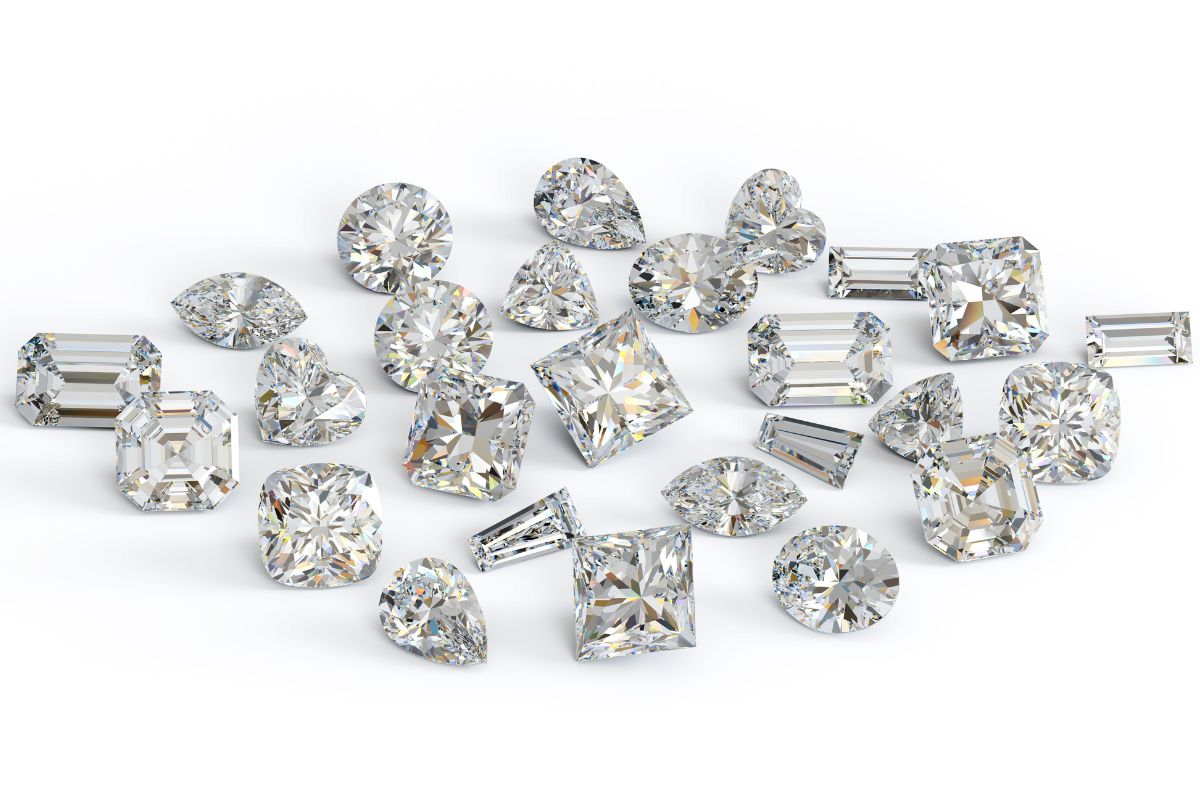
In my expertise, understanding how half moon diamonds contrast with other diamond shapes clarifies their uniqueness and suitability for various jewelry settings.
Half Moon vs. Traditional Cuts
Half moon diamonds present a distinct profile compared to traditional cuts like round, oval, and emerald diamonds. Round diamonds are the epitome of classic style and offer intense brilliance, while oval diamonds share a similar sparkle but in an elongated shape which can make the wearer’s finger appear longer.
Emerald cut diamonds are known for their clarity and iciness, with a step-cut faceting that produces broad flashes of light rather than the fiery sparkle of a round cut. Cushion cuts blend the old mine cut with a modern oval shape, featuring soft corners and a distinctive pillow shape, known for their antique appeal and depth of color. The princess cut is a more contemporary choice, offering a square shape with the brilliance nearly matching that of a round diamond.
Comparatively, a half moon diamond combines one flat edge with a rounded top, which is rarely found in other diamond shapes. This makes half moons particularly complementary to rectangular center stones such as emerald or radiant cuts, as their straight edge mirrors the central stone's lines.
Coordinating with Various Diamond Shapes
I find that the versatility of half moon diamonds lies in their ability to enhance other diamond shapes within a piece of jewelry. They can act as side stones, bringing out the beauty of a central diamond without competing for attention. Here are some pairings:
- Emerald Cut: Half moon diamonds align seamlessly with the straight edges, emphasizing the clean lines.
- Radiant Cut: The intense brilliance of radiant cuts is elegantly framed by the half moon's curved side.
- Princess Cut: Although not a conventional pairing, the juxtaposition of the square shape with the curve of a half moon can be striking.
- Unique Shapes: For those who prefer bespoke designs, half moons pair well with unique shapes to create a one-of-a-kind look.
The ability to pair effectively with different diamond shapes makes half moon diamonds a compelling choice for creating distinct and elegant jewelry.
Frequently Asked Questions
When exploring the world of half moon diamonds, I find it essential to address common enquiries to guide through the specifics of their value, appearance, and distinctive features.
How is the value of a half moon diamond determined?
The value of a half moon diamond is determined by its cut quality, color, clarity, and carat weight. Like other diamonds, it follows the same grading principles, yet symmetry and matching are crucial when they are sold in pairs, often for side stones.
Does the sparkle of a half moon diamond differ from other cuts?
Yes, the sparkle of a half moon diamond does differ. A brilliant-cut half moon diamond is crafted to enhance light reflection and exhibit more sparkle. In contrast, a step-cut has lesser sparkle and emphasizes clarity.
What distinguishes a half moon diamond from a crescent diamond?
A half moon diamond is distinct due to its straight edge and rounded top, half of an oval or round diamond. Crescent diamonds, on the other hand, typically have more curved edges and resemble a crescent moon's shape, which is more elongated than the half moon cut.
What are the defining characteristics of a half moon cut in diamonds?
The defining characteristics of a half moon cut include a straight edge on one side and a curved edge on the other, resembling a semicircle. They are often used as side stones and can be cut in both step-cut and brilliant-cut variations.
Are half moon diamonds available as loose stones, and how are they graded?
Half moon diamonds are available as loose stones and they are graded based on the 4Cs—cut, color, clarity, and carat weight. The grading also considers symmetry, particularly important when matching pairs for jewelry designs.
What considerations are important when selecting a half moon diamond for side stones?
When selecting a half moon diamond for side stones, consider the symmetry between the two, as well as how their shape and style complement the center stone. One should also ensure the color and clarity match to create a harmonious look.
Checkout some of our top collections:
Leave a comment
Please note, comments must be approved before they are published.
